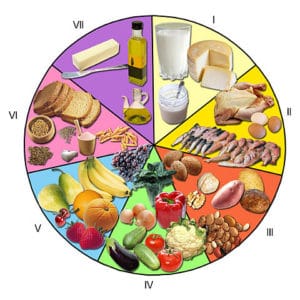Reuters
By Charles Abbott

(Reuters) – The U.S. food movement, which groups a kaleidoscope of causes from inner-city gardens to hunger prevention and no-biotech crops, plans to link the farmers market to the ballot box as it challenges large-scale agriculture this year.
It is the first attempt to turn a largely unorganized social movement into a political force.
The most important initiative for the movement is a November 6 referendum in California to require labels on genetically engineered food sold in grocery stores. Under a new umbrella group, Food Policy Action, the movement issued its first voter scorecard for congressional races this week.
“We’re coming to it about 40 years after the environmental movement did,” said activist Ken Cook, one of the dozen founders of Food Policy Action. “There aren’t a lot of politically oriented organizations in the food movement. This is the first one.”
Organizers include Dave Murphy, a leader in the California referendum, chairman Gary Hirshberg of organic food maker Stonyfield Farm, and two anti-hunger leaders, Ray Offenheiser of Oxfam America and David Beckman of Bread for the World, both veterans of food policy debates. Hirshberg is part of a campaign to label U.S. biotech foods.
“THE BEGINNING OF SOMETHING IMPORTANT”
Author Michael Pollan, a chronicler of the food movement, said the group’s scorecard showed the growth in the food movement.
“All in all, I think this marks the beginning of something important,” Pollan said on Thursday.
Earlier this month, Pollan wrote in an essay that the November 6 general election will test whether the food movement is an organized political force.
Food and agriculture writer Tom Philpott of Mother Jones magazine said the movement is diverse, but seeks healthier food, better pay for workers, less pollution and “non-corporate-owned food networks.”
“I think adding a political pressure wing represents an important asset for the food movement and is potentially part of the food movement’s maturation into a more potent political force,” said Philpott.
Food Policy Action is starting on a financial shoestring with none of the accoutrements, such as a political action committee, of large advocacy groups.
Its scorecard, similar to one the League of Conservation Voters has put out for years, graded senators and representatives on 32 votes involving funding for food safety and public nutrition, cutting farm subsidies and limiting ethanol. Democrats tended to score higher than Republicans.
Fifty lawmakers, mostly from the East and West coasts, got perfect scores of 100, including Sen Barbara Boxer of California and Rep Charles Rangel of New York City.
LOW SCORES FOR FARM BELT LAWMAKERS
Lawmakers from the Farm Belt rated poorly on the “food policy scorecard,” reflecting sharp disagreements between mainstream farmers, who produce the bulk of U.S. food and fiber, and the food movement, which glories in small, local producers as the source of tasty, healthy and high-quality food.
House Agriculture Committee chairman Frank Lucas got a 36 and his Senate counterpart, Debbie Stabenow, a 61, barely above average. Pat Roberts, the Republican leader on the Senate Agriculture Committee, graded at 17.
“We do welcome them (Food Policy Action) to the agriculture community,” said Dale Moore, an executive at the 6 million-member American Farm Bureau Federation.
Moore said he hoped the scorecard would take into account the economic welfare of farmers, adding: “That’s not always readily apparent.”
The scorecard rewarded senators who voted to require farmers to practice soil conservation to qualify for federally subsidized crop insurance. The major U.S. farm groups, who lost the vote in June, say the idea cuts a hole in their safety net.
“Foodies” criticize large-scale mechanized farming, a profitable model since the 1950s, for using biotech seeds and synthetic fertilizers and pesticides, and for confinement feeding of livestock. “Production agriculture” regards foodies as dilettantes in love with outmoded, high-labor methods common when farmers were the perennial poor cousins of city dwellers.
IN CALIFORNIA, YES OR NO ON GMO?
Large segments of the food movement work on nutrition issues, whether it is a “soda tax” to prevent obesity, hunger prevention or food safety regulations. Others say fair wages for workers and humane treatment of livestock are vital links in the food chain. Stereotypically, foodies prize hand-prepared food, heirloom plants, a good restaurant or a time-proven recipe.
For years, farmers markets and organic food were the best-known symbols of the food movement. There are 7,900 farmers markets now, compared with 3,100 a decade ago. Organic sales were strong through the recession and grew by nearly 8 percent in 2010. They were 4 percent of U.S. food and beverage sales.
Nearly 1 million Californians signed petitions to force the November 6 referendum on labeling GMO food, promoted as a consumer “right to know.” Opinion polls showed 2-to-1 support for the proposal initially, but now it is a virtual tie after an advertising blitz by opponents, who say it will drive up food prices and is full of loopholes.
Organic farmers and processors are leading financial backers of the “yes” campaign. The “no” campaign raised more money, led by Monsanto Co and DuPont and helped by food makers such as PepsiCo Inc.
Food activists see California, the largest U.S. state by population with 37.7 million people and the largest agricultural producer, as a fulcrum for action nationwide. California has a history as a leader on food and environmental regulation.
Victory in California, for the first GMO labeling law, could prompt food makers to label products nationwide rather than risk the chance of being accused of mislabeling, say activists, and it might lead to federal action. There is a grassroots campaign for Food and Drug Administration rules for mandatory labeling of GMO foods.
(Editing by Andre Grenon)

